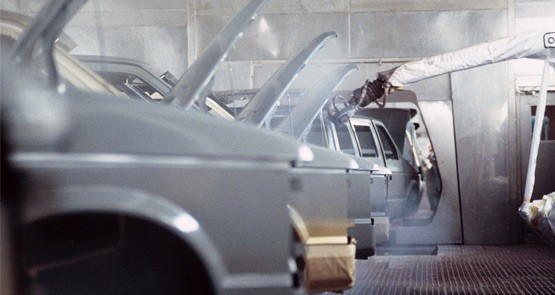
The collapse of car parts maker Autodom has grabbed all the headlines over the weekend, but this morning there are two more bits of bad news for the Australian automotive sector.
Firstly, GM Holden has cut 170 jobs from its Adelaide plant citing further weakness in demand for locally-made cars. Secondly, a report in The Australian Financial Review claims vehicle dealers are overstating new car sales figures by pre-registering cars through holding companies, counting them in the official sales figures and then selling them to the public as new or near-new.
If correct, the report on dodgy sales figures explains a lot. New car sales have held up remarkably well this year, with the market up 9.4% against last year and on track to top one million units across 2012. Yet the news out of the local industry has been unwaveringly ugly.
Autodom is the latest domino to fall. The supplier of body parts was forced into administration on the weekend after talks with its bankers and key customers — Holden, Ford and Toyota — broke down.
Autodom’s attempts to restructure have been hindered by the massive redundancy costs associated with job cuts. The company’s latest plea was for $10 million in cash to tide it over. According to a report from Alan Kohler, Ford and Holden knocked the deal back and now 400 jobs are at risk.
Ford and Holden will feel the repercussions of the failed bailout almost immediately. They will run out of parts from Autodom by the middle of the week and may have to halt production.
Mind you, given Holden’s fresh job cuts, perhaps some short plant shutdowns would help the industry “rebalance supply and demand” — which is industry code for “making a few less cars wouldn’t be a bad thing”.
Autodom’s demise can be blamed on a number of factors, including Australia’s comparatively high labour costs, cost pressures from rising raw material prices and the high Australian dollar, which has reduced the ability for component suppliers to export.
But really this is the story of a local industry that failed to make cars that locals actually want to buy. Australia might be an expensive place to make cars, but let’s be clear here — the likes of Holden and Ford haven’t dramatically cut their domestic production because they are being overrun by demand.
The parts makers who supply the manufacturers are, of course, collateral damage. Not only do production volumes fall as the sales of locally-made vehicles drop away, but the parts makers must also meet the car companies’ demands for cost reductions.
Supplier and customer joust and fight and scrimp and save and cajole and persuade and demand … until there’s just nothing left.
Politicians have been making the usual noises about the importance of the car industry in the wake of the Autodom collapse, and I do agree with the central premise in SmartCompany piece from academics Paul Gollan and Senia Kalfa that a car industry brings many benefits to Australian manufacturing as a whole.
But governments are stuck between a rock and hard place here. There is no money to throw at struggling industries and even if there was, the Australian industry is locked in to making large family cars which simply do not suit Australians any more. Taxpayer funds could save jobs in the short-term, but subsidies can’t spark sales — and that is what is at the heart of this crisis.
I don’t think we might be past worrying about whether governments will step up their efforts to save the car industry — the sector is so far gone that our politicians simply cannot afford it.
The question then becomes how long the big car makers — and the rest of the industry — can really hang on for.
*This article was originally published at SmartCompany







If the government wants to waste taxpayers money on local production of cars they should make sure that all cars purchased by all governments in Australia are the ones being made here and already 50% paid for by us.
There is potential for a cottage industry doing electric car conversions from 2nd hand petrol-fueled cars. It is good option for building a more diversified industry, esp as stringent safety criteria are easily met by using an already-approved chassis. The Mitsubishi Mirage is one such chassis. It’s not very sexy but it would be car industry with a future and not so dependent on a small number of extortionate branch-office corporations and unions.
Why did Labor continue to pour money into a doomed sector with dodgy, inflated figures? Simple. Because it’s highly unionised and it’s Labor’s way to refund the unions for their political donations. The unions spent a lot of money on the 2007 election campaign and expect a return on investment.
Everyone wins except the taxpayer. Quite frankly, this kind of corruption/cronyism is more expected in Zimbabwe than Australia.
Our country is going down the drain, we sign a free trade agreement with Thailand who can make cars for half the price we can and then have to spend billions supporting our foreign owned auto makers. If this government had half a brain they must see that if we have unskilled immigration these people cant all drive taxis or deliver pizza.
@James Munro
So why does the Liberal party ?
@”Secondly, a report in The Australian Financial Review claims vehicle dealers are overstating new car sales figures by pre-registering cars through holding companies, counting them in the official sales figures and then selling them to the public as new or near-new.”
They’ve always done that, so the figures even out over a long period. Manufacturers only offer bonuses to dealers when they have a lot of production in stock they need to shift.